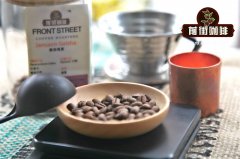Flavor description of Ethiopian Coffee producing area

Professional coffee knowledge exchange More coffee bean information Please pay attention to coffee workshop (Weixin Official Accounts cafe_style)
Ethiopia's main coffee-producing region
Ethiopia is a landlocked country in East Africa, bordering Eritrea in the north and northeast, Djibouti and Somalia in the east, Kenya in the south and Sudan and South Sudan in the west. Vivid earth colors cover the landscape, with many high-altitude mountains complementing the country's tropical clouds. The Blue Nile is the source of most of the country's drinking water. With the exception of a few large government-run estates, almost all (98%) of the country's coffee is grown by farmers on small farms. There are four main areas in the country where crops are grown:
Yirgacheffe--Yirgacheffe is known for growing Ethiopia's most complex, aromatic coffee with spicy, fruity and floral notes. A smaller subregion of Sidama is Yirgacheffe. Yirgacheffe, whose name means "cool meadows," is a fertile, squalid high-altitude region bordering the Great Rift Valley. The coffee grown here has a complex aroma, with dark chocolate flavours and fruit, pepper, citrus and flower flavours. Yirgacheffe coffee is often listed as one of the best coffees in the world.
Harrar-Located east of Ethiopia's capital Addis Ababa, most of the coffee produced here is dry, an exception because experience has shown that Ethiopia's only high-quality coffee is wet. Harar is the largest growing area in the country and has historically grown some of the oldest coffee blends. Coffee grown here can be dried in the sun but remains in the fruit, usually on trees in the process. Hara coffee is known for its rich mocha and chocolate flavors. The earthy aroma has a fruity flavor. Variations include mocha, short berry, long berry, and pear.
Gibby, in the west of the country, where coffee is wet processed. The varieties growing here have a heavier, more durable body than their Harrar counterparts, are more sour, and have a subtle flavor.
Limu -In the higher elevations of the Southwest, ranging from 3600 feet to 6200 feet above sea level, it is a good place to grow quality washed coffee. The varietal is well balanced, low in acidity, low in sweetness and full on the palate with a hint of spice. Limu coffee tastes very similar to coffee grown in Sidamo.
END
Important Notice :
前街咖啡 FrontStreet Coffee has moved to new addredd:
FrontStreet Coffee Address: 315,Donghua East Road,GuangZhou
Tel:020 38364473
- Prev

Ethiopian coffee background, birthplace of Ethiopian coffee
Professional coffee knowledge exchange more coffee bean information please follow the coffee workshop (Wechat official account cafe_style) Ethiopia, the birthplace of Ethiopian coffee, Ethiopia is famous for the birthplace of coffee. It is said that the country's nomadic mountain tribes first discovered its stimulating effect sometime in the 9th century. This plant was originally eaten raw as berries, not as it is today.
- Next

Brief introduction of Sumatra Coffee beans introduction to the characteristics of Sumatra Coffee beans
Professional coffee knowledge exchange more coffee bean information please follow the coffee workshop (Wechat official account cafe_style) Front Street Coffee-Sumatran Coffee characteristics Sumatra is mainly divided into two main producing areas, the more southern producing areas are mainly around Medan, Lake dopa, Lindong, this is the traditional producing areas of Manning, we are familiar with all kinds of manning also from this.
Related
- Beginners will see the "Coffee pull flower" guide!
- What is the difference between ice blog purified milk and ordinary milk coffee?
- Why is the Philippines the largest producer of crops in Liberia?
- For coffee extraction, should the fine powder be retained?
- How does extracted espresso fill pressed powder? How much strength does it take to press the powder?
- How to make jasmine cold extract coffee? Is the jasmine + latte good?
- Will this little toy really make the coffee taste better? How does Lily Drip affect coffee extraction?
- Will the action of slapping the filter cup also affect coffee extraction?
- What's the difference between powder-to-water ratio and powder-to-liquid ratio?
- What is the Ethiopian local species? What does it have to do with Heirloom native species?

